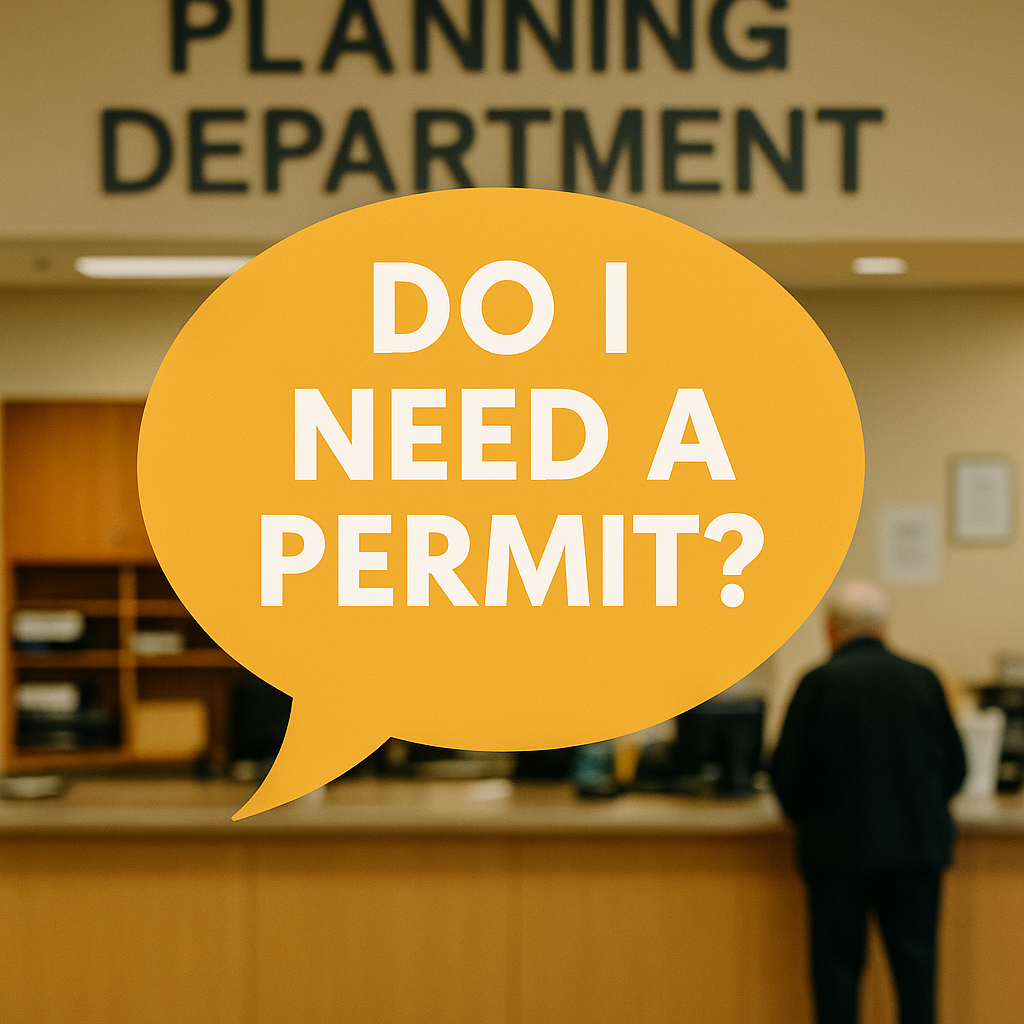Do I Need a Permit for My Project?
Posted June 3, 2025

If you’re planning a remodel, addition, or even a small upgrade to your home, one of the most common questions is:
“Do I need a permit for this?”
The answer depends on what type of work you’re doing — and whether it affects structure, safety, or local zoning rules. In this blog, we’ll break down:
What projects require a permit
What can be done without a permit
What an over-the-counter permit is and when it applies
Why skipping the permit can cost you more in the long run
Let’s dive in.
Projects That Require a Permit
Most projects that affect structural, electrical, plumbing, or mechanical systems will require a building permit. If you’re in Los Angeles, Glendale, Burbank, or any nearby city, expect to pull permits for:
➤ Interior or Exterior Remodels Involving:
Moving or removing walls
Creating new window or door openings
Changing room layouts
Converting a garage to an ADU
Adding a bathroom or kitchen
➤ Additions and Construction:
Room additions
Second-story expansions
ADUs (Accessory Dwelling Units)
New construction
Decks over 30 inches high
Carports or patio covers attached to the home
➤ Electrical, Plumbing & HVAC:
Upgrading your electrical panel
Adding or relocating outlets, lighting, or circuits
Replacing or relocating plumbing lines
Installing or replacing water heaters
Adding or changing HVAC systems
➤ Structural Work:
Foundation repair or replacement
Roof replacement (in most cities)
Retaining walls over a certain height
Load-bearing wall alterations
Projects That Do NOT Require a Permit
While it’s always best to double-check with your local building department, here are common projects that usually don’t require a permit in most LA-area cities:
Painting or wallpapering
Replacing flooring or carpet
Minor drywall repair
Installing shelves or cabinets (non-structural)
Replacing faucets, fixtures, or appliances (same location)
Fence repair or installation under 6 feet (varies by city)
Decks under 30 inches high
Non-fixed outdoor furniture and decor
Keep in mind: Even small jobs may require a permit if they’re located in a hillside zone, historic overlay zone (HPOZ), or involve changes to egress or accessibility.
What Is an Over-the-Counter Permit?
An over-the-counter (OTC) permit is a type of building permit that can be approved on the same day — without a full plan check or long review process.
Common Over-the-Counter Permit Uses:
Window or door replacements (same size and location)
Water heater replacement
Electrical service panel upgrades
Reroofing (in many cities)
Minor non-structural interior work
Simple bathroom or kitchen upgrades that don’t move plumbing
Note: While OTC permits don’t require full plan submittals, you still need to follow code — and inspections will be required once the work is done.
What Happens If You Don’t Get a Permit?
Skipping a permit might seem like a way to save time and money, but it often leads to:
Failed inspections when selling the home
Fines or stop-work orders from the city
Trouble with insurance claims if damage occurs
Costly rework if plans don’t meet code
Permits exist to ensure safety, legality, and resale value. A well-documented project gives future buyers peace of mind.
We Can Help You Determine If a Permit Is Needed
At I Arch Studios, we’ve helped hundreds of homeowners across Los Angeles, Glendale, and Burbank understand their city’s requirements and avoid delays. Whether you’re remodeling a kitchen, converting a garage, or just replacing windows — we’ll help you determine:
Whether you need a permit
If it qualifies for over-the-counter processing
What plans and documents are required
How long the process will take
Final Thoughts: When in Doubt, Ask
If you’re asking, “Do I need a permit?” — the safest answer is: Check first. Even simple projects can trigger city requirements depending on your location.
Need help getting started? Contact I Arch Studios today for a consultation. We’ll help you design, draw, and permit your project the right way.








